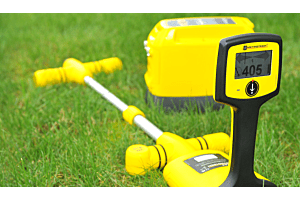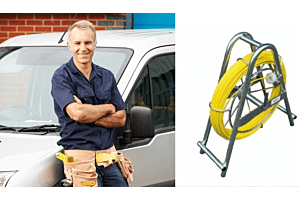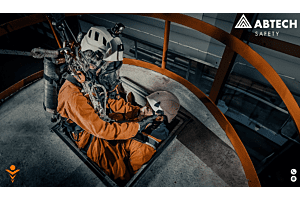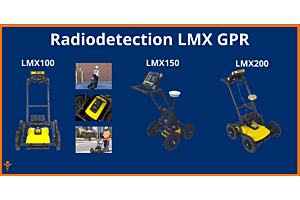
Drain inspections are a critical aspect of plumbing maintenance, and the quality of the camera used can make a significant difference. High-resolution cameras have revolutionized the field, offering unparalleled clarity and detail. This guide will delve into the importance of using high-resolution cameras for drain inspections, troubleshooting common issues, and much more.
What Does a Drain Inspection Camera Do?
Purpose and Functionality
A drain inspection camera is an essential tool for plumbing professionals. It consists of a camera head attached to a flexible rod, which is inserted into the sewer line. The camera relays real-time footage to a monitor, allowing for a detailed visual inspection of the drainage system.
Benefits of High-Resolution Cameras
High-resolution cameras offer a clear view of your underground service, capturing even the smallest cracks, leaks, or blockages. This leads to more accurate assessments and better decision-making, ultimately saving time and money.
Troubleshooting Common Issues with Sewer and Drain Inspection Cameras
Common Issues
Users often face issues like blurry images, difficulty navigating tight pipes, and camera malfunctions. Software updates and regular maintenance can mitigate most of these problems.
Solutions and Tips
- Optimize Image Quality: Ensure the camera lens is clean and the lighting is adequate.
- Navigate Tight Pipes: Use a flexible rod and a camera head designed for tight spaces.
- Prevent Camera-Related Problems: Regularly update the camera's software and conduct routine check-ups.
The Top Issues a Sewer and Drain Camera Inspection Can Uncover
High-resolution cameras can reveal a range of issues, from minor to major problems, including:
- Blockages: Caused by foreign objects or debris buildup.
- Leaks: Often due to cracks or loose joints.
- Tree Root Infiltration: Roots can invade and block the sewer line.
- Structural Damage: Such as collapsed pipes or misalignment.
Early detection of these issues can prevent costly repairs and potential damage to your property.
Choosing and Using High-Resolution Cameras for Drain Inspections
Key Factors to Consider
- Resolution: Opt for a high-definition camera for the best results.
- Flexibility: Ensure the camera rod is flexible enough to navigate bends.
- Lighting: Built-in LED lights can enhance visibility.
- Additional Features: Wi-fi connectivity and thermal imaging can be valuable tools.
Recommendations
Based on years of experience and various sources, the Vivax, Pearpoint and Dart drain and inspection cameras come highly recommended for their high-quality inspection systems and advanced features.
Maintenance and Care for High-Resolution Drain Inspection Cameras
Regular maintenance is crucial for the longevity of your camera. This includes:
- Cleaning: Wipe the camera head after each use.
- Storage: Store in a dry, cool place.
- Regular Check-Ups: Conduct routine inspections to ensure all parts are functioning correctly.
Conclusion
High-resolution cameras have significantly transformed the field of drain inspections. They offer improved diagnostic precision, enabling professionals to detect even minor issues efficiently. Investing in a high-quality, high-resolution camera is crucial for accurate diagnostics and effective plumbing maintenance.
FAQs (Frequently Asked Questions)
- How do high-resolution cameras improve drain inspections?
High-resolution cameras provide clearer and more detailed images, allowing for accurate identification of problems within the drainage system.
- What are the common issues faced with sewer and drain inspection cameras?
Common issues include blurry images, difficulty navigating tight spaces, and occasional malfunctions. Regular maintenance and software updates can mitigate these problems.
- What are the benefits of using high-resolution cameras for drain inspections?
High-resolution cameras offer superior image quality, enabling professionals to see even the smallest details within drains. This enhances the accuracy of diagnostics, allowing for precise identification of problems and targeted solutions.
- How do I choose the right high-resolution camera for drain inspections?
Consider factors like resolution, flexibility, lighting, and additional features. Consult various sources and reviews to make an informed decision.
- How often should I conduct drain inspections with high-resolution cameras?
Regular inspections are advisable, but the frequency may depend on the age and condition of your drainage system. Consult with professionals for personalized advice.






Login and Registration Form